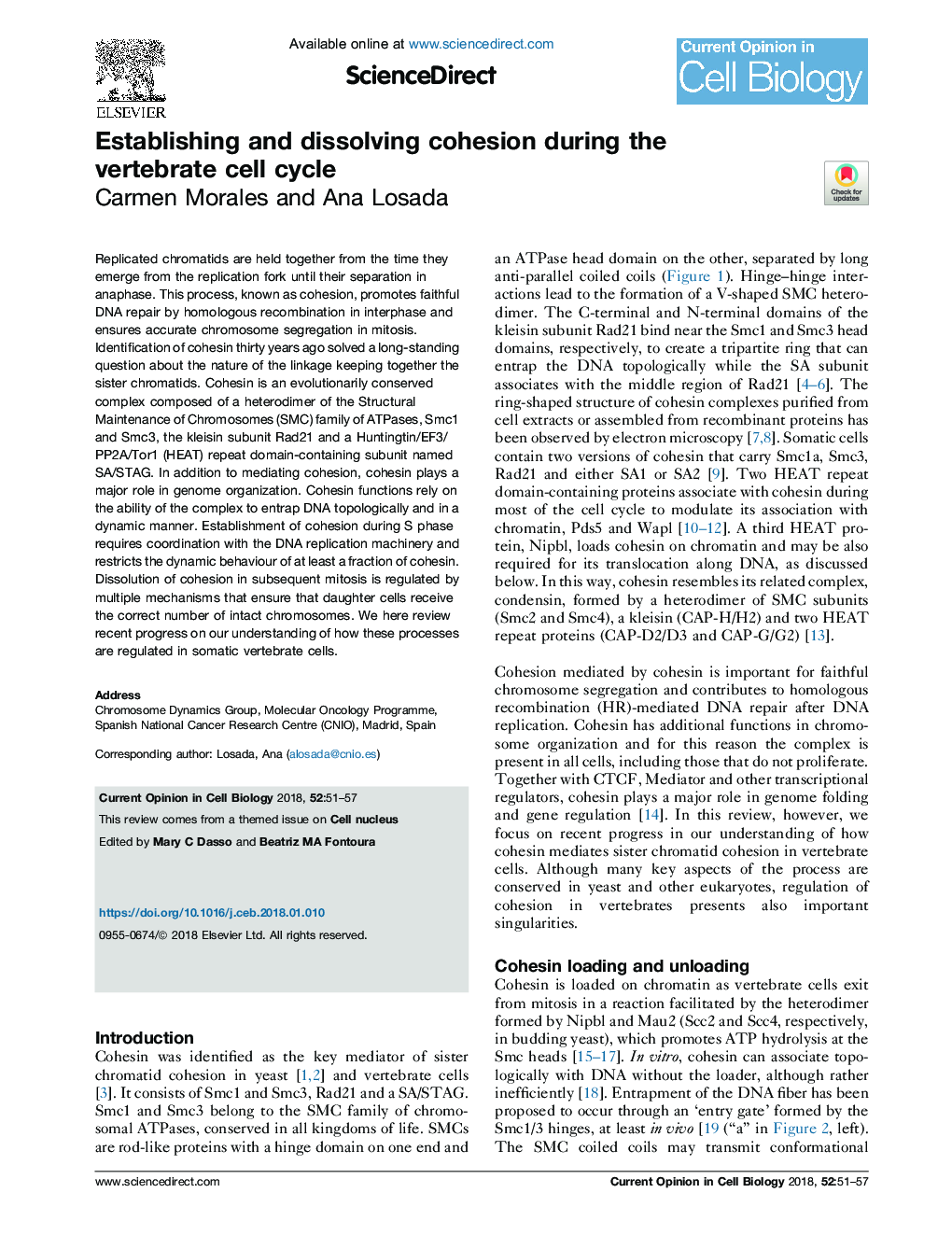| کد مقاله | کد نشریه | سال انتشار | مقاله انگلیسی | نسخه تمام متن |
|---|---|---|---|---|
| 8464829 | 1549454 | 2018 | 7 صفحه PDF | دانلود رایگان |
عنوان انگلیسی مقاله ISI
Establishing and dissolving cohesion during the vertebrate cell cycle
ترجمه فارسی عنوان
ایجاد و حل شدن انسجام در چرخه سلول های مهره دار
دانلود مقاله + سفارش ترجمه
دانلود مقاله ISI انگلیسی
رایگان برای ایرانیان
موضوعات مرتبط
علوم زیستی و بیوفناوری
بیوشیمی، ژنتیک و زیست شناسی مولکولی
بیولوژی سلول
چکیده انگلیسی
Replicated chromatids are held together from the time they emerge from the replication fork until their separation in anaphase. This process, known as cohesion, promotes faithful DNA repair by homologous recombination in interphase and ensures accurate chromosome segregation in mitosis. Identification of cohesin thirty years ago solved a long-standing question about the nature of the linkage keeping together the sister chromatids. Cohesin is an evolutionarily conserved complex composed of a heterodimer of the Structural Maintenance of Chromosomes (SMC) family of ATPases, Smc1 and Smc3, the kleisin subunit Rad21 and a Huntingtin/EF3/PP2A/Tor1 (HEAT) repeat domain-containing subunit named SA/STAG. In addition to mediating cohesion, cohesin plays a major role in genome organization. Cohesin functions rely on the ability of the complex to entrap DNA topologically and in a dynamic manner. Establishment of cohesion during S phase requires coordination with the DNA replication machinery and restricts the dynamic behaviour of at least a fraction of cohesin. Dissolution of cohesion in subsequent mitosis is regulated by multiple mechanisms that ensure that daughter cells receive the correct number of intact chromosomes. We here review recent progress on our understanding of how these processes are regulated in somatic vertebrate cells.
ناشر
Database: Elsevier - ScienceDirect (ساینس دایرکت)
Journal: Current Opinion in Cell Biology - Volume 52, June 2018, Pages 51-57
Journal: Current Opinion in Cell Biology - Volume 52, June 2018, Pages 51-57
نویسندگان
Carmen Morales, Ana Losada,
